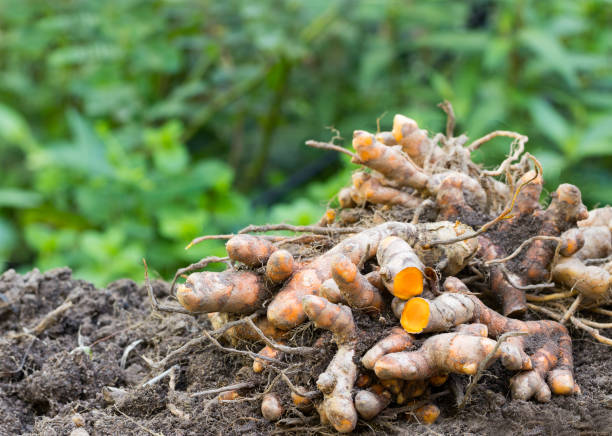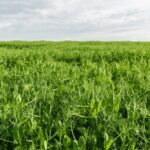Turmeric (Curcuma longa) is a valuable spice crop prized for its rich golden color, distinctive aroma, and numerous health benefits. As consumer demand for chemical-free food grows, organic turmeric farming has gained popularity as a sustainable and eco-friendly alternative. By avoiding synthetic inputs and focusing on natural processes, organic farmers can cultivate high-quality turmeric while preserving soil health and biodiversity. Here are key techniques for successful organic turmeric farming.
Site Selection and Climate Requirements
Turmeric thrives in warm and humid climates. It prefers areas with temperatures between 20°C and 35°C and annual rainfall ranging from 1,000 to 2,000 mm. The best soils for turmeric are well-drained loamy or sandy loam soils with good organic matter content and a pH between 5.5 and 7.0. Land selected for organic farming should be free from synthetic chemical exposure for at least three years.
Land Preparation
Start by ploughing the field deeply to loosen the soil and expose hidden pests. Incorporate 20 to 25 tons of well-decomposed farmyard manure or compost per hectare to enrich the soil. Form raised beds or ridges to improve drainage, especially in areas with heavy rainfall.
Seed Selection and Treatment
Use healthy, disease-free rhizomes collected from previous organic harvests. About 2,000 to 2,500 kg of seed rhizomes are needed per hectare. Before planting, soak the rhizomes in a solution of Trichoderma harzianum or Pseudomonas fluorescens to protect against fungal diseases.
Planting Method
Turmeric is typically planted at the start of the rainy season. Place rhizomes about 5 to 7 cm deep with spacing of 30 cm between rows and 20 to 25 cm between plants. After planting, apply a layer of mulch such as green leaves or straw to retain soil moisture and suppress weed growth.
Nutrient Management
Organic turmeric farming relies on natural nutrient sources. Apply 20 to 25 tons of compost or farmyard manure during land preparation and again during the growing season. Vermicompost (5 tons per hectare) and green manures like sunhemp can be incorporated to boost soil fertility. Biofertilizers such as Azospirillum and Phosphobacteria help improve nutrient availability.
Weed and Moisture Control
Weeding is done manually two to three times during the crop’s growth. Mulching helps conserve soil moisture and suppress weed growth. In areas without sufficient rainfall, irrigation every 7 to 10 days ensures steady growth and healthy rhizome development.
Pest and Disease Management
Organic turmeric farming uses biological methods for pest and disease control. Common pests include shoot borers and scale insects, while diseases like rhizome rot and leaf spot can also affect yields. Use neem oil sprays (3 percent) and neem cake to deter pests. Apply biocontrol agents such as Trichoderma and Pseudomonas fluorescens to control soil-borne diseases. Ensure good drainage and remove infected plants to prevent disease spread.
Harvesting and Post-Harvest Handling
Turmeric is usually ready for harvest 7 to 9 months after planting when the leaves start yellowing and drying. Carefully dig out the rhizomes to avoid damage. Clean and wash the rhizomes, then boil them for 45 minutes to an hour to enhance color and aroma. Sun-dry the boiled rhizomes for 10 to 15 days until completely dry. Polishing removes the outer skin, and the dried turmeric is then stored in cool, dry conditions in jute bags or wooden boxes.
Organic Certification
To market turmeric as organic, farmers must obtain certification from a recognized body. This involves using only approved organic inputs, maintaining records of farming practices, and undergoing regular inspections. Certification not only ensures credibility but also opens access to premium markets.
Organic turmeric farming is a sustainable practice that enhances soil health, reduces environmental impact, and meets the growing demand for natural and healthy products. With careful planning, regular monitoring, and commitment to organic principles, farmers can successfully grow turmeric without synthetic chemicals while achieving good yields and high market value.
Join 'Farmers Mag' WhatsApp Channel
Get the latest Farming news and tips delivered straight to your WhatsApp
CLICK HERE TO JOIN






